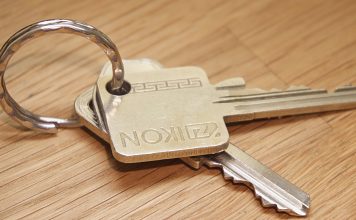 |
|
| Issue #134 • March/April, 2012 |
|
As the cost of solar cells has declined, the industry has started to increase the physical size of individual solar modules. This not only has reduced manufacturing costs, but, because of the larger modules, has also reduced the number of field wiring connections needed to install the same size system. This market trend has also increased the weight of each module and the size of the aluminum frames and heavy tempered glass.
Smaller wattage solar modules first manufactured during the 1980s for off-grid and battery charging applications, are becoming harder to find as manufacturers have rushed to supply the faster-growing market for larger residential and commercial systems. In addition, as module sizes have increased, the 12-volt DC nominal voltage (actually 16 to 17 volts) standard that was first used with smaller modules was too low to handle the higher wattage of these larger modules.
Most modules over 125 watts now have a nominal 24-volt DC (actually 30 to 39 volts) output that is too high to directly charge 12-volt batteries or power most low-voltage DC devices. In addition, solar charge controllers that can match higher-voltage solar modules with lower-voltage batteries are expensive and sized for much larger systems. This means it can be a challenge to find smaller low-cost solar systems suitable for charging 12-volt batteries and re-charging 12-volt electronic devices.
Although smaller 12-volt solar modules are becoming harder to find and cost more per watt than larger wattage modules, you can now buy portable fold-up solar modules with built-in voltage regulators specifically designed for charging 12-volt batteries. This means you can connect these fold-up solar modules directly to a battery without the need for a separate solar charge controller or other electrical components typically needed for a fixed solar installation.
|
Several years ago the largest fold-up solar modules available were under 5 watts, about enough power to keep a cell phone or iPod charged. However, non-glass modules which can be folded-up to the size of a small book are now available in larger 25- to 30-watt sizes, which will easily power a laptop computer or keep your boat/RV battery fully charged. A portable 12-volt DC module with a 25-watt rating can provide more than 2 amps of output in full sun, yet can be easily folded up to fit in your car’s glove box or a camping backpack when not needed. A module this size can keep your fishing boat’s trolling motor or laptop computer battery fully charged in addition to recharging your cell phone and iPad.
Fold-up modules typically include a metal grommet in each corner, making it easy to tie on the hood of a car or deck of a boat, or to suspend between two trees when camping. Fold-up solar modules are advertised as having a rugged construction and long-life, but I am not sure I would use these for permanent installations or where these would be subject to months of hostile weather. However, including one of these flexible modules in a bug-out bag or as part of your emergency preparation supplies is almost mandatory these days.
Many of us would feel helpless today without our cell phones, iPod’s, Kindles, Nooks, laptops, iPads, digital cameras, email devices, and portable radios, and since we can easily recharge these devices in any nearby wall outlet, we never think about their limited battery run time. In fact, most of these electronic devices will be totally useless in less than 24 hours if we suddenly find ourselves without utility power for recharging. Of course, if you have to evacuate due to a fast-approaching wildfire, hurricane, tornado, or chemical spill, packing all these electronic books, videos, and games may not be your first concern. However, taking along a cell phone, portable radio, and a flashlight will keep you in communication with the outside world and make life much less threatening during a crisis, assuming you have a way to keep them charged.
|
Of course you could pack a ton of “AA” and “AAA” batteries, which will keep most portable radios and flashlights operating for weeks. However, today’s cell phones and portable computer devices utilize built-in high-capacity battery packs that cannot be replaced. In addition to having varying voltages, most of these built-in batteries can only be recharged using a special power connector and battery charger.
Designers of these portable electronic devices know that most daily recharging will be from a 120-volt AC wall outlet, but utility power may not be available during emergencies or on a camping trip.
All of the portable solar modules represented in this article include a large complement of DC plug adapters and a “female” 12-volt DC auxiliary car (cigarette lighter) outlet. This means it is now possible to recharge almost any electronic device that includes its own 12-volt DC car charger.
Most of the adapter cables supplied with each fold-up solar panel will also include a set of large spring clamps to easily attach to your car or boat battery terminals for emergency recharging. Of course solar modules cannot charge your batteries at night, so if you find yourself stranded with a dead car battery, you will be waiting for sunrise before getting back on the road!
|
If your emergency power needs are limited to portable radios and flashlights that still use “flashlight” batteries, I found a really great battery charger called AccuManager that can recharge all sizes of flashlight batteries, including the rectangular 9-volt batteries typically found in many portable radios and electronic games. What I really like about this charger is that it has electronic charger controls that will sense what type battery is inserted in any of the multiple charging slots and will separately adjust the recharging voltage and current for each specific battery, and charge multiple batteries at the same time.
This is a great feature since Ni-Cad, Li-ion, and NiMH rechargeable batteries each have a totally different charging cycle. Of course, this means you will need to replace any expendable batteries in your devices with the more expensive rechargeable batteries, but you now will be able to operate these electronic devices and flashlights almost indefinitely using solar power and this battery charger.
This charger also includes its own 12-volt DC plug which exactly matches the adaptor cable furnished with these fold-up solar modules. Although this charger is very lightweight, it is still too large for a tightly packed bug-out bag, so it is more suitable for RV or remote cabin use.
The criminal world is also starting to realize several thousand dollars’ worth of solar modules will easily fit in the back of an old pickup truck, so theft is becoming a concern for owners of solar modules mounted on remote cabins in sparsely populated areas. For this reason, I am getting calls from people looking for a solar array they can easily move outside during weekend use or a power outage, and then bring back inside when they leave or the utility power is operating again. This is a great application for fold-up modules since several can be wired together to increase capacity and temporarily tied down on the south-facing roof of a cabin, woodshed, or storage building.
|
For example, combining the output of four 25-watt fold-up modules will produce more than 8 amps of 12-volt DC power which can recharge two deep-cycle 6-volt golf cart batteries. When wired in series to provide 12-volts, these batteries can power a small DC to AC inverter that will power a microwave oven, television, or small well pump. This portable solar power system will also have the capacity to power multiple low-voltage lights in a multi-room cabin or RV. For extended run time, I would first convert any 12-volt DC fluorescent or incandescent light fixtures you are using to 12-volt LED lamps, which will allow your battery charge to last up to four times longer.
Since most of the larger wattage fold-up modules can cost more than $200, there are several low-cost alternatives if you only need solar power for emergency lighting. Solar-powered lights for camping are now available for less than $65. They are lightweight and will easily fit in a bug-out-bag.
I like the portable solar light shown in the previous picture, as this fold-up desk lamp fits into slots on the back of the included solar module for packing. This model includes a long connecting cable so the solar module can be placed outside a tent, car window, or cabin, while the light can be placed by a nearby desk or bed. This light also includes a built-in photocell which turns the light off during the day to save battery drain in case you forget to turn it off. Although not much larger than your fist, this miniature desk lamp is very bright and will run many hours on a charge.
|
It is now much easier to find a solar-powered battery charger in a size that fits your budget and emergency needs. However, it is important to take inventory of all electronic devices you now own and decide which ones are absolute necessities to operate during an emergency. I recommend shopping for a car adapter charger that fits more than one device.
For example, although my wife and I have different brands and models of cell phones, I discovered they both have the same charger plug and can use the same charger. When I purchased a portable radio and several LED-style flashlights, I selected models that use the same size and type of batteries. This simple plan will make it easier for a single fold-up solar module to charge multiple devices, and will help reduce the need for multiple chargers, batteries, and adapter cables.
Remember, during an extended emergency, all of your cell phones, laptops, electronic devices, and flashlights will be totally useless after the first day if you have no way to recharge them, so keep this in mind when planning for your family’s safety.
Jeff Yago is a licensed professional engineer and certified energy manager with more than 30 years experience in the energy conservation field. He has extensive solar photovoltaic and emergency preparedness experience, and has authored numerous articles and texts. His website is www.pvforyou.com.
[weaver_widget_area id=’articles_about_yago’ class=’text3′]




















